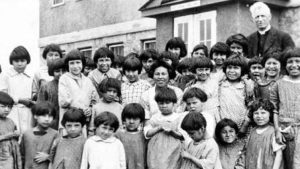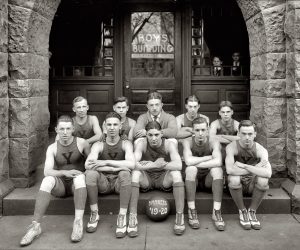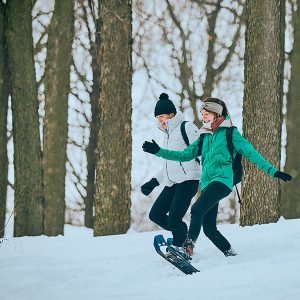4
These are difficult stories. We bear witness in this chapter to the role of sport in furthering the settler colonial projects throughout Turtle Island. Here are some supports to access in the community and from a distance:
First Peoples House of Learning Cultural Support & Counselling
Niijkiwendidaa Anishnaabekwag Services Circle (Counselling & Healing Services for Indigenous Women & their Families) – 1-800-663-2696
Nogojiwanong Friendship Centre (705) 775-0387
Peterborough Community Counselling Resource Centre: (705) 742-4258
Hope for Wellness – Indigenous help line (online chat also available) – 1-855-242-3310
LGBT Youthline: askus@youthline.ca or text (647)694-4275
National Indian Residential School Crisis Line – 1-866-925-4419
Talk4Healing (a culturally-grounded helpline for Indigenous women):1-855-5544-HEAL
Section One: History
A) The Residential School System
Exercise 1: Notebook Prompt
We are asked to honour these stories with open hearts and open minds.
Which part of the chapter stood out to you? What were your feelings as you read it? (50 words)
One part that stood out to me was the description of children being forcibly removed from their families and stripped of their language and culture. Reading this evoked feelings of sadness and anger, especially knowing the lasting trauma these experiences caused for Indigenous communities across generations. It underscored the importance of truth and reconciliation.
B) Keywords
Exercise 2: Notebook Prompt
Briefly define (point form is fine) one of the keywords in the padlet (may be one that you added yourself).
In the context of Indigenous culture, Muscular Christianity refers to the way colonial institutions, including residential schools, used sport and physical activity to enforce Euro-Christian ideals of discipline, strength, and morality. While sports were sometimes a positive outlet for Indigenous youth, they were also used as tools of assimilation, promoting Western values and diminishing traditional Indigenous practices and cultural identities. This approach often overlooked Indigenous ways of knowing, community values, and spiritual connections tied to physical activity.
C) Settler Colonialism
Exercise 3: Complete the Activities
Activity 1:
- if colonialism is typically temporary, settle colonialism is long-lasting
- in contrast with colonialism, in settle colonialism, settlers form lasting attachments to the land
Activity 2:
- Settler colonialism often grows out of colonialism
- TRUE
Activity 3:
- What is the role of sport in settler colonial projects?
- Appropriating the body cultures of indigenous peoples
- Controlling the bodies of indigenous peoples
Exercise 4: Notebook Prompt
Although we have discussed in this module how the colonial project sought to suppress Indigenous cultures, it is important to note that it also appropriates and adapts Indigenous cultures and “body movement practices” (75) as part of a larger endeavour to “make settlers Indigenous” (75).
What does this look like? (write 2 or 3 sentences)
This process can be seen in how colonial settlers adopted certain Indigenous body movement practices, such as canoeing, snowshoeing, and lacrosse, while stripping them of their cultural and spiritual significance. These activities were often rebranded as recreational sports or survival skills, reinforcing settler dominance and identity. By claiming these practices, settlers attempted to establish a sense of belonging on the land while marginalizing Indigenous peoples’ connections to their own traditions.
D) The Colonial Archive
Exercise 5: Complete the Activities
- Most photos were taken for official reporting reasons and therefore “cannote meanings tied to church and state objectives”
- images currated to suggest “a sheltered and productive school environment” that was “efficient, well-managed, and orderly” created a false familiarity for readers who are invited to superimpose their own educational experiences onto what they see”
- widely circulating generic images convey a sense that faces are interchangeable and erase individual indigenous identities
Section Two: Reconciliation
A) Reconciliation?
Exercise 6: Activity and Notebook Prompt
Visit the story called “The Skate” for an in-depth exploration of sport in the residential school system. At the bottom of the page you will see four questions to which you may respond by tweet, facebook message, or email:
How much freedom did you have to play as a child?
What values do we learn from different sports and games?
When residential staff took photos, what impression did they try to create?
Answer one of these questions (drawing on what you have learned in section one of this module or prior reading) and record it in your Notebook.
|
B) Redefining Sport
B) Sport as Medicine
Exercise 7: Notebook Prompt
Make note of the many ways sport is considered medicine by the people interviewed in this video.
|
C) Sport For development
Exercise 7: Notebook Prompt
What does Waneek Horn-Miller mean when she says that the government is “trying but still approaching Indigenous sport development in a very colonial way”?
|
Exercise 8: Padlet Prompt
Add an image or brief comment reflecting some of “binding cultural symbols that constitute Canadian hockey discourse in Canada.” Record your responses in your Notebook as well.
|
Section Three: Decolonization
Please see the major assignment for this half of the term in the final section of this chapter.






